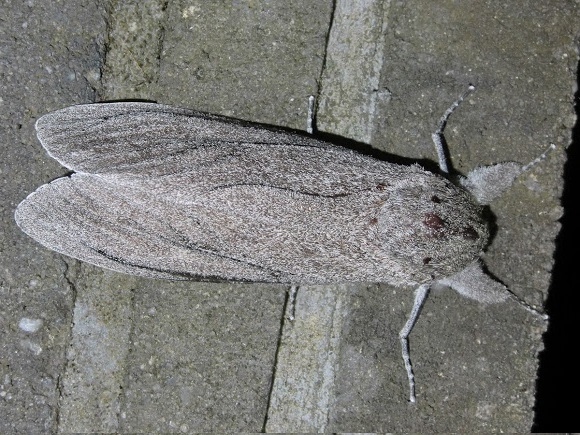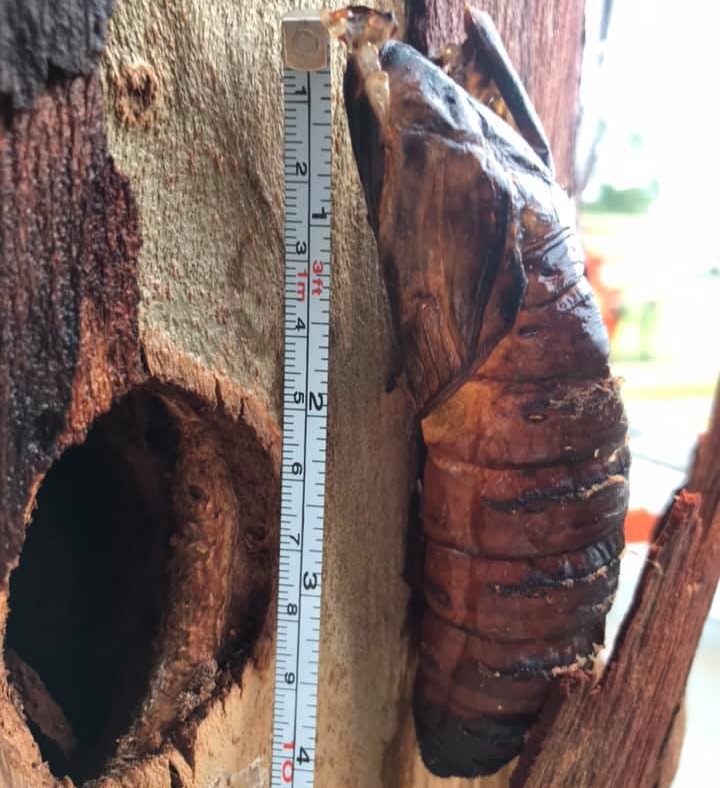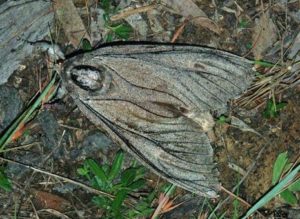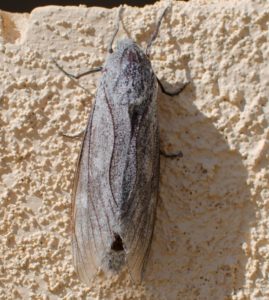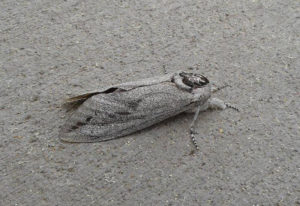Giant Wood Moth (Endoxyla cinereus)
Giant wood moth of the carpenter millers or cossid millers family is a native of Australia and New Zealand. They have a reputation of boring into the wood of eucalyptus trees, hence the name.
lh3.googleusercontent.com
Scientific Classification
- Family: Cossidae
- Genus: Endoxyla
- Scientific Name: Endoxyla cinereus
Description and Identification
Caterpillar
In Australia, most larvae of the wood-eating moths are known as witchety grub because of their worm-like appearance, and this one is no exception. It has a pale brown or whitish segmented body.
When newly emerged, they remain wrapped in silken threads, feeding on their host plants’ roots.
Adult Moth
Sexual Dimorphism: Males appear smaller than females, being half their size.
Color and Appearance
Forewings: When opened, it is gray with light brown spots. When closed, the brown spots do not appear too prominent.
Hindwings: When opened and closed, the hindwings are brown.
Average Wingspan: 23 cm
Flight Pattern: Not recorded
Season: Not recorded
Egg
The eggs are small, and in a lifetime, the female giant wood moth lays about 20,000 of them.
Quick Facts
| Distribution | Australia (New South Wales and Queensland), New Zealand |
| Habitat | In eucalyptus forests |
| Predators | Bats and birds |
| Lifespan of Adults | One year |
| Host Plants | Eucalyptus |
| Adult Diet | Not recorded |
Scientific Classification
- Family: Cossidae
- Genus: Endoxyla
- Scientific Name: Endoxyla cinereus

